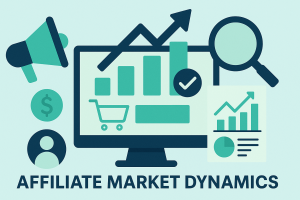
Share
Influencers and content creators have become pivotal players in shaping trends, driving consumer behavior, and fostering brand loyalty. As more brands turn to influencers to promote their products or services on social media over traditional advertising, it’s important to understand the nuances of the industry. Leveraging creators in your affiliate marketing campaign is an effective way to spread brand awareness and increase conversions.
Before diving into the four types of influencers, let’s first briefly recap the most common ways to collaborate with them – sponsored content and affiliate marketing.
Sponsored Content vs Affiliate Marketing
If you’re on social media you (and if not, how are you enjoying your spare time??), you probably see posts with tags like #sponsored, #ad, #sponcon, or #brandname_ambassador as influencers are required by the Federal Trade Commission to disclose all endorsed content. These are usually found alongside sponsored content, which is when creators are paid a fee per post about a brand. In affiliate marketing, influencers partner with a brand and earn commission when their audience makes a purchase through their link. Sponsored content is usually a one-off collaboration, whereas affiliate marketing is an ongoing promotion. (FYI, Advertise Purple can help your brand find opportunities for both.)
Ok, back to the four types of influencers and content creators you can work with to leverage your brand on various platforms. Including, but not limited to, blogs, Instagram, TikTok, and YouTube, among other social networks.
Nano Influencers (Less than 1,000 Followers)
Nano influencers may have a smaller following (1,000 and below), but their influence can be mighty. They have been historically overlooked until brands started to notice the power of niche communities, more personal relationships, and higher engagement. Nano influencers are viewed more as everyday people or friends that you can relate to, making their recommendations carry significant weight.
Brands collaborating with nano influencers benefit from highly targeted and authentic promotions. While the reach may be limited, their platforms excel at building trust and driving high engagement with specific niches, making them valuable assets especially for localized or specialized marketing campaigns.
Micro Influencers (1,000 – 100,000 Followers)
Micro Influencers, who have a follower range from 1,000 to 100,000 are also characterized by their niches and authentic engagement. These influencers have a more intimate connection with their audience which fosters trust and credibility. Micro influencers are often experts in their respective fields, think fitness, food, or travel.
Brands partnering with micro influencers can tap into targeted communities, creating campaigns that still feel like a word-of-mouth recommendation. The authentic and genuine nature of micro influencers’ content resonates well with audiences, leading to higher conversion rates.
Macro Influencers (100,000 – 1,000,000 Followers)
Macro influencers represent the middle ground in the influencer hierarchy, with a follower range from 100,000 to one million. These influencers offer a blend of reach and engagement, making them valuable partners for brands aiming to target specific demographics. Macro influencers often have a dedicated fan base, allowing for interactive and genuine connections.
Brands working with macro influencers benefit from a substantial reach while maintaining a more personal touch. Macro influencers are often viewed as public figures, making their recommendations resonate with their followers.
Mega Influencers (1,000,000+ Followers)
At the peak of the influencer hierarchy we have the mega influencers, featuring over one million followers. These creators are celebrities or have achieved celebrity-like status within their respective niches. Mega influencers carry significant influence and have the power to reach a massive audience in one click. Despite their massive following, they may have a lower engagement rate or lack authenticity due to the scale of their audience.
Brands often collaborate with mega influencers to tap into their broad reach and leverage their status to promote products or services. Their ability to create trends and drive awareness makes them sought after partners for brands with large marketing budgets.
Working With Influencers
Understanding the distinctions between nano, micro, macro, and mega influencers is important for brands looking to leverage affiliate marketing in various ways. Each category offers distinct characteristics so you should consider brand goals, target audience, marketing objectives, and budget when deciding who to collaborate with. As the influencer and content creator landscape continues to evolve, building lasting relationships with individuals will be a key to success in affiliate marketing.
Interested in Affiliate Marketing?
If you’re interested in exploring the potential of affiliate marketing for your brand, our team is here to guide you. We specialize in creating successful affiliate partnerships that drive conversions and maximize ROI. Contact our team today to discover how affiliate marketing can elevate your brand’s digital presence and sales performance.



